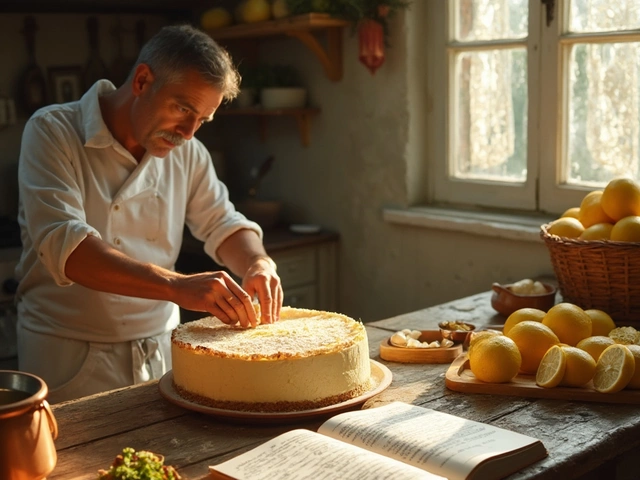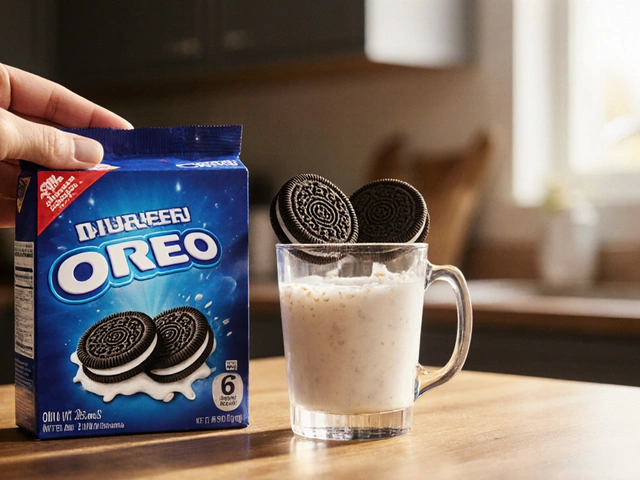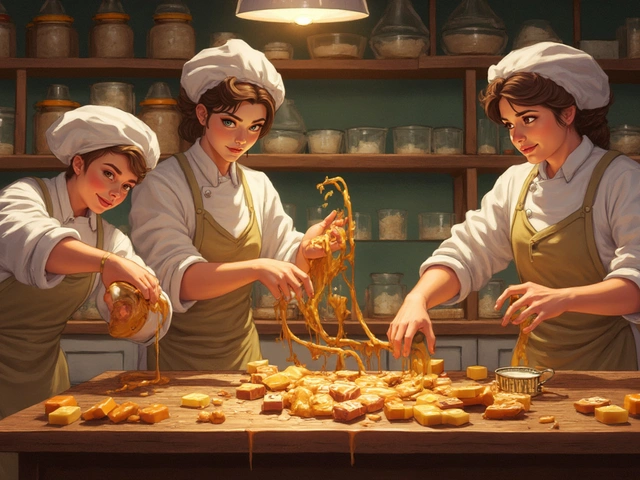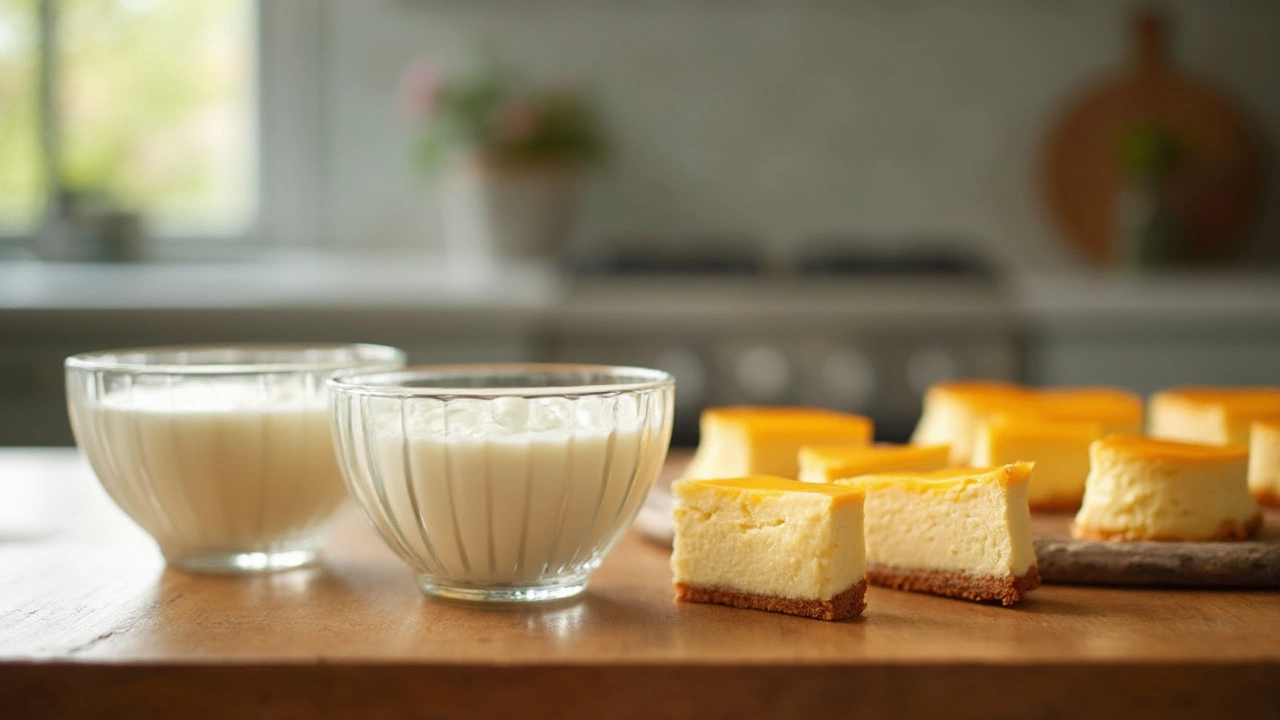
If you’ve ever made cheesecake and wondered if it really matters which cream you use, you’re not alone. Standing in the dairy aisle, doubled over tiny labels, you’ve probably seen both double cream and whipping cream side-by-side. The thing is, that little percentage number on the tub isn’t just random; it seriously affects the way your cheesecake sets, tastes, and slices.
Here’s the no-nonsense scoop: double cream is much richer than whipping cream. We're talking about at least 48% fat in double cream, while whipping cream hovers anywhere from 30–36%. That higher fat doesn’t just make things velvet-smooth—it can mean a firmer, denser cheesecake that feels super luxurious on the tongue. But there’s a trade-off: use too much, and your cheesecake can tip from creamy to heavy, even a bit greasy.
- Cream Basics: What's the Difference?
- How Each Cream Changes Your Cheesecake
- Fat Content: The Real Game Changer
- Can You Swap One for the Other?
- Pro Tips for The Smoothest Cheesecake
Cream Basics: What's the Difference?
Here’s the real kicker: not all creams are created equal, especially when it comes to double cream and whipping cream. Their main difference is fat content, and that changes everything in baking. Double cream is the heavy hitter. In the UK and some other places, it clocks in at about 48% fat. Whipping cream, depending where you’re shopping, falls between 30% and 36% fat. If you’re in the US, similar options are called heavy cream or heavy whipping cream (which are usually closer to 36%).
This fat isn’t just a number—it's what gives cakes that luscious, rich texture or, if you choose wrong, leaves your cheesecake too loose or oddly dense. Double cream is thick and rich right out of the carton. You can dollop it on fruit and it’ll hold its shape. Whipping cream, though still creamy, is a bit lighter. It easily whips into soft or stiff peaks but doesn't have that almost-butter thickness straight from the tub.
| Cream Type | Typical Fat Content (%) | Texture | Best Use |
|---|---|---|---|
| Double Cream | 48 | Very thick, rich | Cheesecake, ganache, dessert toppings |
| Whipping Cream | 30–36 | Lighter, airy when whipped | Filling, frosting, mousses |
One thing to watch for: in Australia, New Zealand, and some European countries, the naming can get even more confusing. Always check the actual fat content on the packaging. If the recipe says double cream but you can only get whipping cream, you need to know what you’re trading—less fat means less creaminess, but sometimes better whipability.
Bottom line: Fat content drives the flavor, texture, and how your cheesecake sets up. Double cream brings major richness and stability, while whipping cream is all about lightness and easy blending. Knowing this can help you pick the best one for your next cheesecake, so you don’t end up with a wobbly mess or a brick.
How Each Cream Changes Your Cheesecake
Double cream and whipping cream don't just swap in for each other—they actually change the whole vibe of your cheesecake. Double cream is way thicker and packs almost 50% fat, while whipping cream sits lower on the fat scale. This one detail shapes how your cheesecake looks, tastes, and even how it feels when you eat it.
Using double cream means your cheesecake sets a lot firmer, so you’ll get super clean slices that can stand up to a heavy topping. The flavor is richer and the texture feels extra decadent. If you like a dense New York-style cake, double cream gets you closer—but if you go overboard, it can weigh things down and mute fruity or citrus flavors in your filling.
Whipping cream, on the other hand, brings more air into the mix. That’s perfect if you’re after a lighter, silkier cheesecake that’s got a bit of bounce or fluff. It doesn’t set as densely, so your slices might be just a touch softer, and the overall flavor leans more mellow—never too rich or cloying. This is especially great when you want cheesecake to pair off with bold toppings like chocolate ganache or fresh berries.
- If your recipe uses whipping cream and you swap in double cream, the batter gets thicker fast and you’ll need less mixing time.
- If you add whipping cream when the original calls for double, you might have to chill it longer for a good set, and the cake can taste cooler and almost ‘milky’ in comparison.
So, when picking between these two, think about your cheesecake goals—ultra indulgent, or light and airy? That tiny change in dairy can totally transform your final dessert experience. No wonder double cream and whipping cream are the center of so many cheesecake debates.

Fat Content: The Real Game Changer
This is the bit where things get real. The fat percentage in cream isn’t just a boring number—it totally changes your cheesecake. Double cream clocks in at around 48% fat, while whipping cream lands closer to 30-36%. That higher fat in double cream means you’ll get a much richer cheesecake. It sets up firmer, slices cleaner, and has that super smooth mouthfeel people rave about.
The science is simple: fat traps air and gives your cheesecake stability after mixing. The more fat, the silkier it turns out once it’s chilled. If you’re after a classic New York-style cheesecake, double cream helps you get that dense, decadent texture.
But here’s a tip from the trenches—too much fat can backfire. If your mix is mostly double cream, you risk a greasy edge or a cake that feels heavy instead of dreamy. Most traditional recipes find their sweet spot by mixing a bit of both creams, or using double cream in moderation. Getting the ratio right makes all the difference.
- Double cream: ultra-rich, dense, firmer set
- Whipping cream: lighter, airier, slightly more wobbly texture
If your recipe is all about a melt-in-your-mouth, cheesecake recipes-style finish, that fat balance is what brings it all together. Think of it as the backbone of your cake: too little, and it’s floppy; too much, and it’s almost butter. Most home bakers find that a blend keeps things on the creamy side without turning your cheesecake into a brick.
Can You Swap One for the Other?
Thinking of swapping double cream and whipping cream for your next cheesecake? Sure, it’s possible, but there are a few things you should know before making the switch. The difference in fat content is no joke, and it’s the main reason your cheesecake could turn out way different than you expect. If you sidestep the science, you might end up with a texture that just feels off.
The big deal is in how much fat each cream brings to the table. Here’s a breakdown so you can see for yourself:
| Cream Type | Fat Content | Whips Easily? | Best For |
|---|---|---|---|
| Whipping Cream | 30-36% | Yes | Classic American Cheesecake |
| Double Cream | 48-50% | Very Easily (can over-whip) | Extra Rich, Dense Cheesecake |
Here’s what that means for your dessert:
- If your cheesecake recipe says whipping cream, and you only have double cream, use it—just don’t over-whip. Double cream thickens fast and can split if you’re not paying attention.
- If you want to lighten things up, swapping the other way around (using whipping cream when a recipe calls for double cream) is workable. You might get a fluffier, slightly less rich cheesecake.
- Optional workaround: If a very specific texture is important, try replacing only part of the double cream with whipping cream or even a bit of whole milk. This lets you tweak the fat content without sacrificing stability.
One more heads-up: double cream isn’t available everywhere (it’s common in the UK but rare in the US and Canada). If you’re in North America, heavy whipping cream is your closest match, but you still won’t hit those extra-rich UK results unless you mix in a little butter or mascarpone.
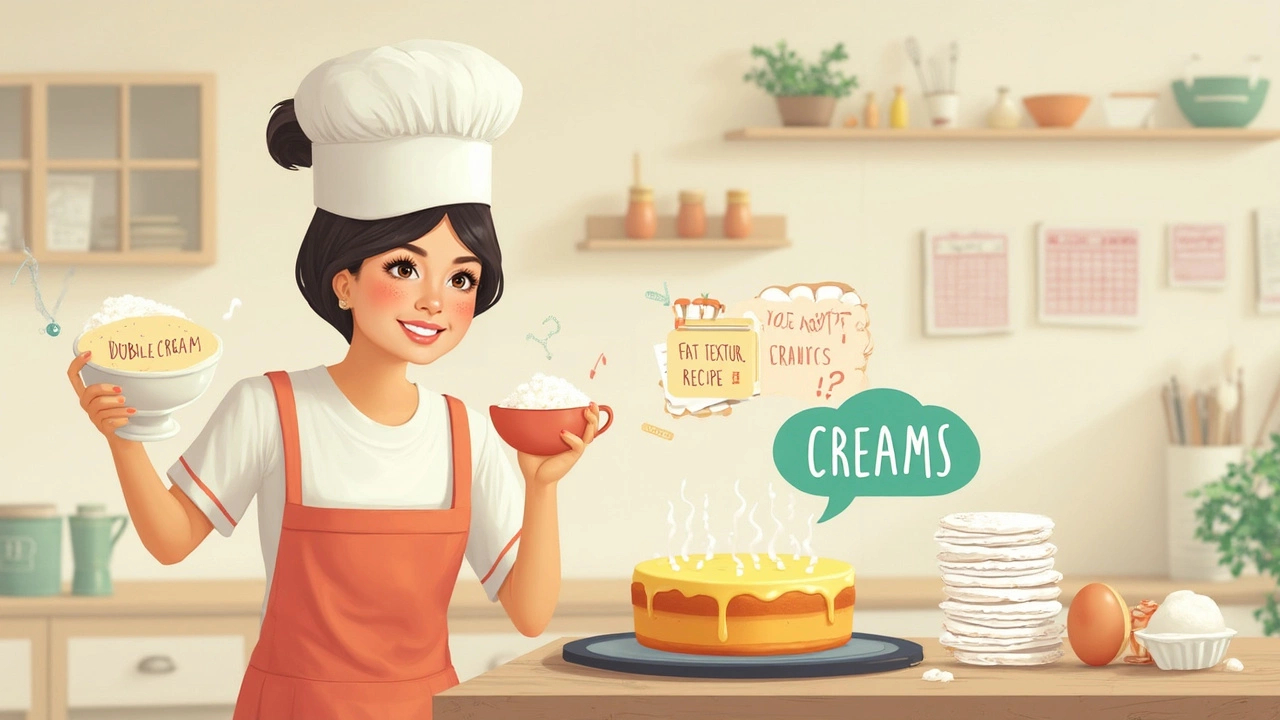
Pro Tips for The Smoothest Cheesecake
So you want that perfect, ultra-smooth cheesecake texture—no cracks, no graininess, and just the right level of creamy? Here’s what actually works in practice, whether you’re reaching for double cream or sticking to whipping cream for your cheesecake recipes.
- Use room temperature ingredients: Cold cream or cheese creates lumps. Always leave your cream, eggs, and cream cheese on the counter for at least an hour before mixing.
- Don’t overmix: Beating your filling too much lets too much air in, which causes cracks. Mix at low-to-medium speed, just until everything’s smooth and combined.
- Bake in a water bath: Place your springform pan into a bigger pan and fill the outer pan with hot water up to halfway. This keeps baking gentle and even, so the sides don’t overcook before the center sets.
- Chill overnight: Cheesecake needs real time to set. Waiting at least 6-8 hours (or overnight) in the fridge gives you the best texture. It’s worth it.
Here’s a quick look at how different creams impact your cheesecake’s texture and richness:
| Cream Type | Fat Content | Texture Result | Best For |
|---|---|---|---|
| Double Cream | 48%+ | Dense, rich, super creamy | Baked cheesecakes, New York-style |
| Whipping Cream | 30–36% | Lighter, slightly fluffier | No-bake cheesecakes, airy styles |
If you’re after that classic New York dense cake, double cream pulls ahead. For a lighter, mousse-like cake, whipping cream keeps things from getting heavy. Also, never forget to run a thin knife along the rim of your cheesecake as soon as it’s out of the oven. This stops cracks from forming as it cools and shrinks a bit away from the pan.
Don’t be shy about using parchment paper on the bottom of your pan, either. It makes getting those perfect slices so much easier when it’s time to serve.


